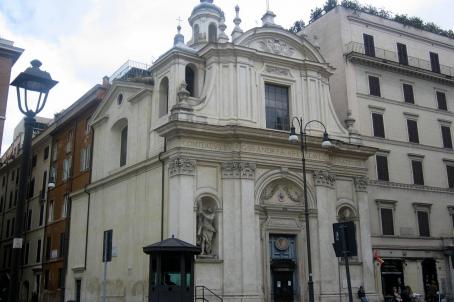Church of Santa Maria in Via

The church of Santa Maria in Via was founded as a chapel in the 10th century but in 1594, it was completely rebuilt, based on a project by Giacomo della Porta, by Francesco Capriani da Volterra. In 1897, due to the opening works of the new via del Tritone, it underwent the rebuilding on the north side.





